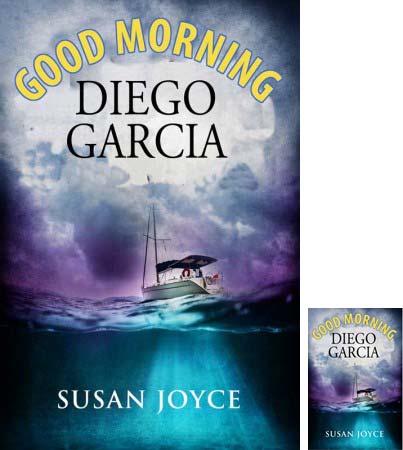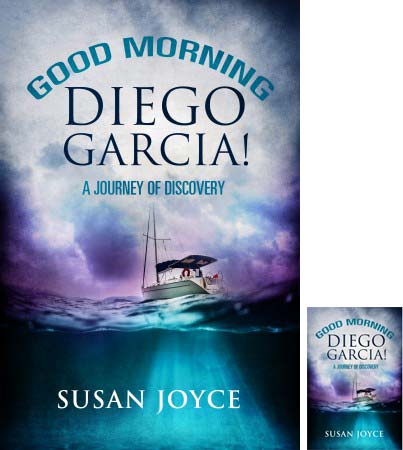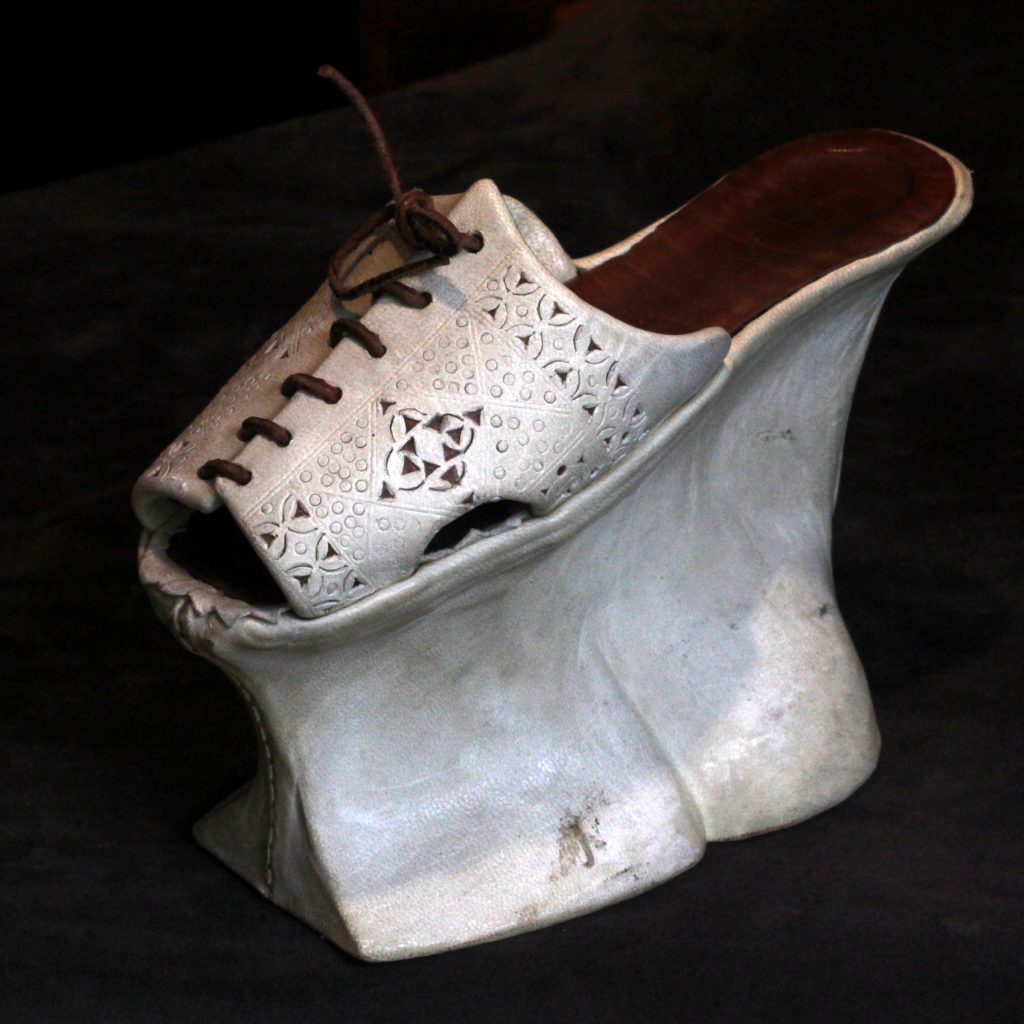
|
|
|
High heels are a cultural conundrum for many women who recognize both their debilitating effects and their supposed allure. And they’re a statement piece among some gender-fluid folks.
|

Inspiration and encouragement for your own personal journey of awakening …

|
|
|
High heels are a cultural conundrum for many women who recognize both their debilitating effects and their supposed allure. And they’re a statement piece among some gender-fluid folks.
|
Thanks to The English Informer for reminding me of this fun Italian adventure!


 You tried to bury me. You forgot I was a seed.
You tried to bury me. You forgot I was a seed.
—Dinos Christianopoulos, Greek Poet
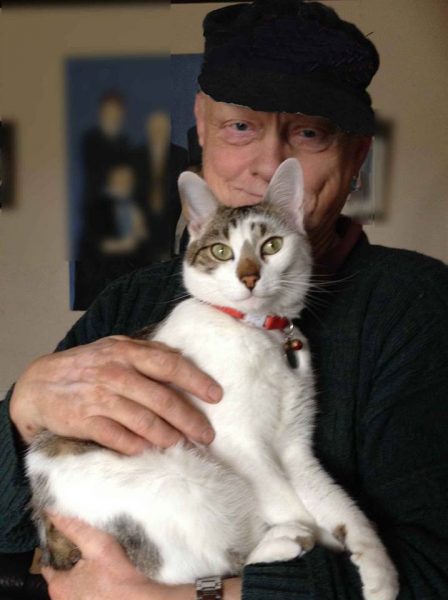
Today I welcome Author, Interviewer, Musician, Screenwriter Graham Higson to my Why Create? interview series! Born in Huddersfield, England, Graham Higson spent his childhood in a country hamlet outside Halifax, attending The Clare Hall School before moving to Crossley & Porter School for sixth form work.
A seasoned professional writer for over 40 years, he holds a BSc (Honours) degree in technology (in which he managed to squeeze a course on writing for theatre), and an MA Professional Writing from University College Falmouth (in Cornwall), which specializes in media. For his last year, he chose to specialize in scriptwriting.
He enjoys swimming, reading, watching lots of screen drama, and searching for that elusive moment of self discovery. He’s also helping to republish the novels of British writer, Leo Walmsley.
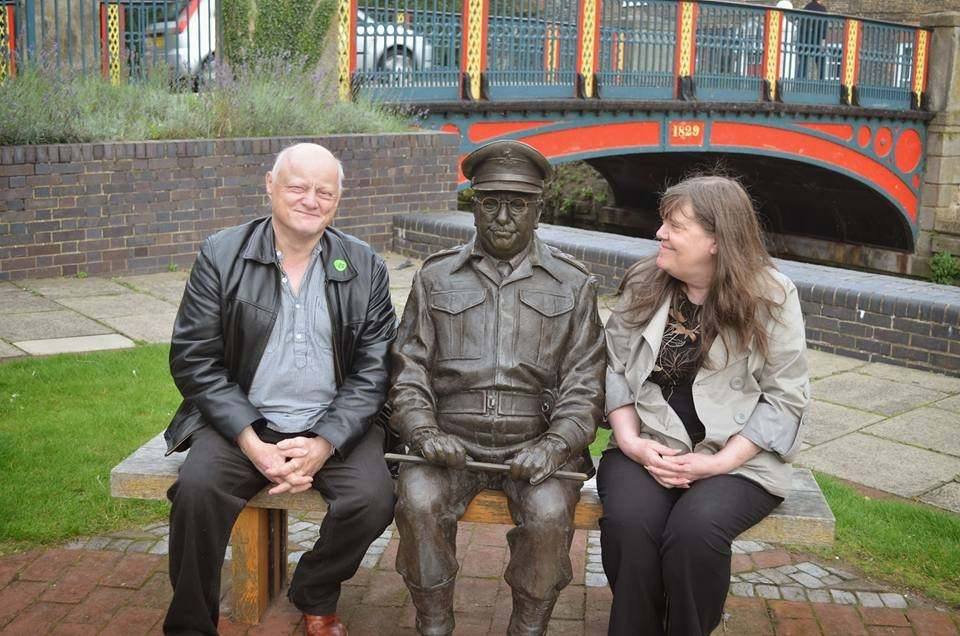
Graham Higson hides in an outlying Pennine village. (The Pennines are a range of mountains in Northern England which separate North West England from Yorkshire and North East England.) Graham shares this blustery environment with his wife Margaret, a growing collection of books, and a workshop piled high with offcuts of oak. His two grown-up children are among his best friends.
A childhood fascination with television and radio turned into a teenage reality when he began interviewing celebrities for his school magazine. He said meeting them was like stepping through the television screen and getting to know the real people behind the public facades.
His eBook, “All Creatures Great and Famous” tells the story of meeting Gilbert O’Sullivan (my favorite) and many more. It can be purchased for just 99p on Amazon. https://www.amazon.com/dp/B018PWSMY0
Susan Joyce: Was music a big part of your early life? Writing? Reading?
Graham Higson: When I was 2, I played records on my brother’s Dansette record player. My mother bought one record per week and my early years were shaped by such people as The Seekers, Guy Mitchell, Elvis Presley, Dusty Springfield, and The Beatles. As a teenager I would record songs from the radio and I still have all of my cassettes. Getting rid of such things is a bit like ditching your past, and I can never bring myself to do that because I need to have the items that remind me of people who are no longer around; I may never actually use them again, just so long as I know they are there.
At secondary school I liked Gilbert O’Sullivan’s quirky lyrics and range of styles. His was the first chart LP I ever bought. I liked it so much I went and bought his other album the following week. Ten months later I interviewed him after a live show-stopping performance.
As a child I read a lot, and was particularly taken with The Magician’s Nephew, C S Lewis’s prequel to The Lion, the Witch and the Wardrobe in the Narnia series. From an early age I could see that this story had it all: boy and girl protagonists, visiting other worlds, bad things happening, and moral implications. Good triumphs over evil, and love wins in the end; that’s just as it should be.
Susan Joyce: I love the story of you interviewing Gilbert O’Sullivan. You were only sixteen. That must have been awesome.
Graham Higson: Whenever I hear Get Down, I remember him performing it live at Batley Variety Club in 1974. My father drove me there to interview Gilbert and for over an hour we stood in the smoky night club atmosphere, watching his spectacular performance. Later that night I met the man himself (no pun intended – Himself was the title of his first album): 27 years old, outselling Rod Stewart and Elton John. What a memorable experience.
Susan Joyce: What age were you when you did your fist interview?
Graham Higson: I was 15, a “fourth-former”, or “year 10” as it is now in the UK. I believe this is 9th Grade in the US.
Susan Joyce: Did you interview James Bond?
Graham Higson: No, I didn’t get to interview Sir Roger Moore face-to-face, though I put a question to him as a member of the audience, and when I was 15. I had a front row seat at the Royal Shakespeare Theatre in Stratford when Timothy Dalton (who became Bond #4) was playing Romeo. So that’s two Bonds I’ve seen. Other entertainers? Let’s see… off the top of my head I can think of Shirley Eaton, the Bond girl in Goldfinger, David Soul (Starsky and Hutch), Alan Davies (who plays Jonathan Creek), Robert Beltran (Star Trek: Voyager), and others who are known mostly in the UK.
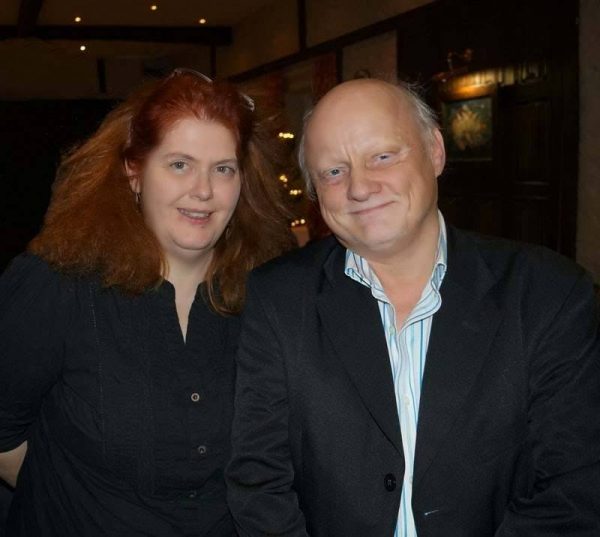
Susan Joyce: Do you still enjoy interviewing?
Graham Higson: Yes, I do enjoy meeting famous people and getting to know them. This why I’ve recently begun interviewing authors for eBook Showtime. We’re using Skype which, after all the technical things that can go wrong, and all the background chatting that goes on behind the scenes in preparation, by the time we have a working 15-20 minute show it feels as though we have known each other for years. I like to count my victims-sorry, I mean subjects as my friends. I only hope they feel the same about me. No one’s said otherwise… not yet they haven’t.
Susan Joyce: Do you play a musical instrument?
Graham Higson: I played the trumpet at school, but wanted to be a keyboard player, so in my teens I began playing the piano and organ. I learnt a great deal about technique by watching professional theater organists at weekly concerts in the 1980s and bought a massive theater console with full keyboards and pedal-board. It was almost too large for the house we lived in. Around 25 years later it began smoking one night, and it had to be scrapped. I’ve not played since. Now I’m left with a comb and paper–does that count as a musical instrument?
Susan Joyce: Of course it counts. I can remember being taught how to make a comb and paper instrument. Fun! I’ve since learned how to make my wine glass sing.
Graham Higson: I was joking about the comb and paper—I’ve not been able to find a comb for years. I can’t even find the hair to use it on. 😉
Susan Joyce: (laughs) When and how did music hit you big time? What music inspires you most? Do you have a favorite era? One you are still exploring?
Graham Higson: When Freddie Mercury died in 1991, I rather took to Queen; it started when the BBC screened a tribute documentary about Freddie and, at the very end, played the video of Days of Our Lives (the first time it had ever been seen on TV). In this, his last video performance, it was obvious he was terribly ill. At the end he looks straight at the camera and says, “I still love you.”
That was what did it for me. My interest in Queen was something my wife and children had been waiting for, so we went all-out and bought the whole collection of CDs and videos. In my mid-teens I had also taken a liking to the Carpenters–so you see my tastes in music are a right old mix. In answer to your question, this looks very 70s-based, doesn’t it, as that’s the decade when Queen started? But really I take whatever I like from wherever I find it.
I particularly like the inventiveness of the Queen videos. But if there’s one pop video that really makes me feel happy it’s Michael Bublé’s I Just Haven’t Met You Yet. It gets me every time. And no, I’m not a romantic. Well, I wasn’t the last time I checked.
I rather like television theme music; have done since the late-60s when I used to record them on 5-inch tapes using a hand-held microphone. Still got them too, and my dad’s tape recorder. Theme music has since become a multi-million dollar industry, and I like to think I was one of the first to recognize it as a serious commercial genre.
Susan Joyce: Is Leo Walmsley a writer you admired? Were you introduced to his work in school?
Graham Higson: My wife and I came across Leo Walmsley when we visited the rather picturesque village of Robin Hood’s Bay on England’s North Yorkshire coast in 1989. There was a commemorative plaque on the house where he lived as a boy, but it was 1995 before we bought one of his books, then when we returned home I just had to order the only other two books that were still in print at that time. It feels strange that in recent years I have re-edited and republished these very titles – and most of his other books too. They tend to be classed as “semi-autobiographical”, a term I don’t think he much liked, but which I would call fictionalized memoir, not unlike Gerald Durrell’s My Family and Other Animals, the James Herriot vet books, and my own How Much For a Little Screw? Hmm, come to think of it there could’ve been some influence at work there.
Susan Joyce: I know you enjoy screen drama. Have you written any screen scripts? I’m taking a screen writing course and absolutely love this unique form of writing.
Graham Higson: I did a 2-part mini-series of Flither Lass (that later I turned into a novel), a little 1-hour fun romantic comedy called Good Cop, Bad Girl, and a 10-minute short set in a Victorian coal mine, The Trapper Boy. This year I mean to get back to screenwriting and get my screenplays seen by production companies. One of the issues, especially in the UK, is that a company can accept a script, set the writer on a course of re-working and editing, and even find a broadcaster, but then one of the executives can dump it for no apparent reason. As a TV writer you never know where you are, and if your story does go all the way, it can take years for it to be produced and eventually shown.
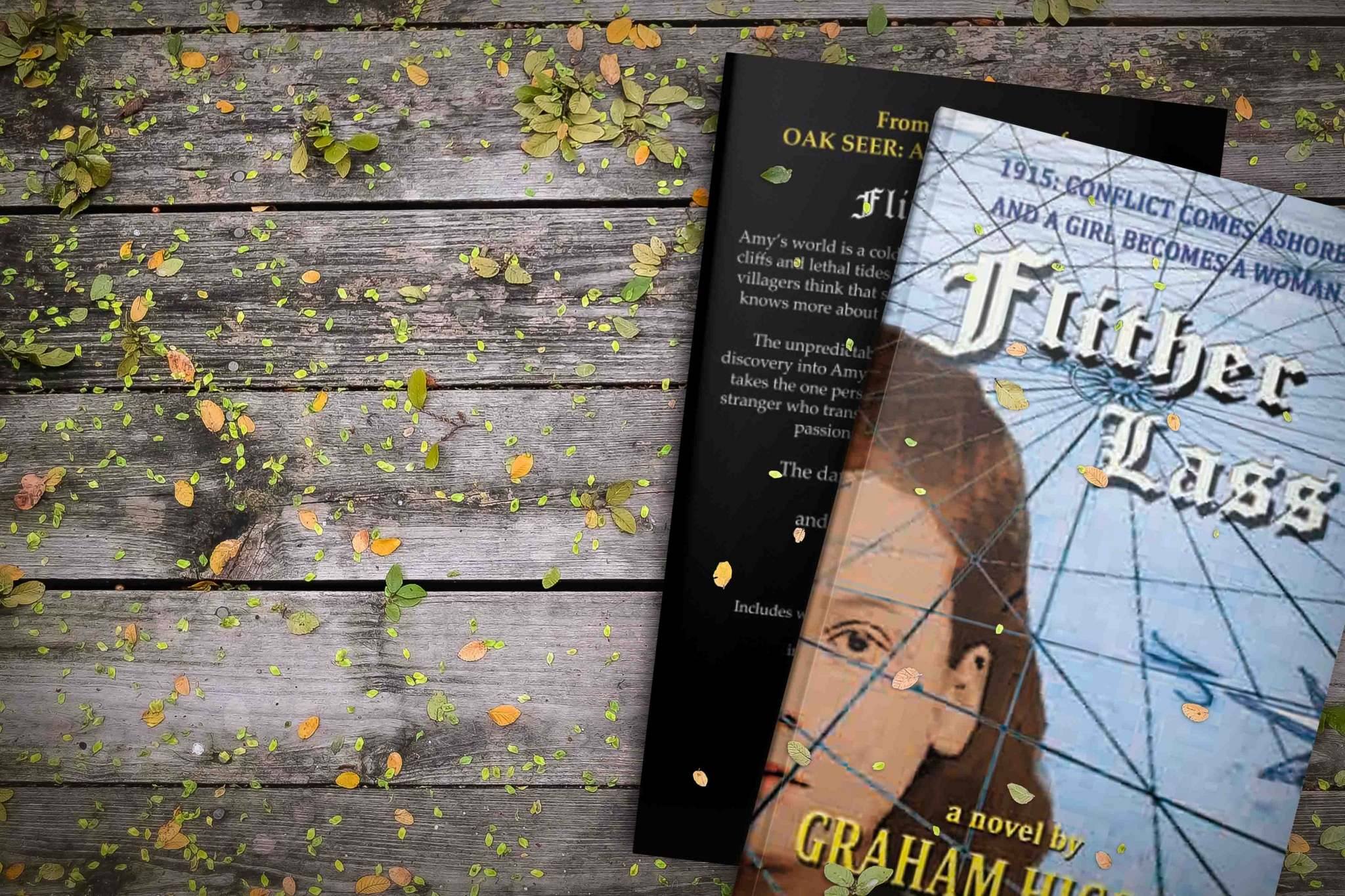
Susan Joyce: What inspired you to write your first book?
Graham Higson: Creating a supernatural story was my means of getting to sleep when I was in hospital in 1988 whilst having eye surgery. I’d always wanted to write fiction, and over the next three years did some in-depth research–and there was no internet back then, so it meant wearing out shoe leather–and the book became Quercus Necromancer, eventually re-titled Oak Seer.
Susan Joyce: What is the most important life lesson you have passed on to your children?
Graham Higson: I hope I have passed on the value of a close family. That means a lot to me.
Susan Joyce: One last question. I love making something unique out of my thoughts and imagination. Why do you create?
Graham Higson: I like making things out of raw materials-whether that’s a log store from a pile of lumber (such as I’ve been working on this past week), or a story from a bunch of disparate ideas. I also like painting pictures, which just about confirms it. Maybe I was always meant to make stuff. So whether it’s tangible or virtual, it still provides a great deal of satisfaction.
Susan Joyce: Thank you for sharing your thoughts and creative adventures! Good luck with all your projects!
Graham Higson: Thank you, Susan. It’s been a pleasure speaking with you.
You can see all of Graham Higson’s books on his website:
http://www.grahamhigson.com/
http://grahblog.blogspot.co.uk
http://grahblog.blogspot.com.uy/
Oak Seer: A Supernatural Mystery – adventure novel
http://smarturl.it/OakSeer
Flither Lass – historical novel
http://smarturl.it/Flither
How Much For a Little Screw?: Tales from Behind the Counter – fictionalized memoir
http://smarturl.it/littlescrew
All Creatures Great and Famous – 99c/p
http://smarturl.it/allcreatures
All Mod Cons: How Much For a Little Screw Book 2 – $1.81 / £1.49
http://smarturl.it/AllModCons
Welcome to my Why Create? interview series!
Do artists create works because they are producing objects for future generations to view? Do writers write to inspire and influence others? Or, is creative work conductive to our happiness? Our purpose? In my interview series with creative people, I hope to find answers as we explore the creative process and motives.
Today I welcome Author, Artist, Poet, Cook, and Traveller, Syd Blackwell to my Why Create? interview series!

Syd Blackwell is a native of Rossland, BC (Canada), a tranquil mountain town that was once a booming mining town. The peace of nature, and the remnants of history were instrumental in his formative years. He became a teacher and worked in schools and colleges for twenty-five years. These work years were interspersed with acting in amateur theatre, and planning set and sound work. Syd co-authored an historical atlas, wrote poems for a collection called Life Is A Poem, became a weekly newspaper columnist, featuring the local bridge club, created a newsletter for high school student recruitment, and wrote many published articles.
When Syd retired from teaching, he helped design a bed and breakfast inn and became the innkeeper of Wintergreen Inn in Revelstoke, BC.
I first met Syd and his wife, Gundy, when my husband and I visited Uruguay in 2009 to see if it would be a good country to move to from Mexico. As we pulled into their front drive, in Atlántida, Uruguay, I noticed a “hand-painted” sign on the gate. “Casa Inspiración.” I heard dogs bark, welcoming us, and thought, Ah, interesting people! That was eight years ago and we continue to marvel at the lives of these two curious and creative souls.>
Susan Joyce: Syd Blackwell, thanks for allowing me to quiz you regarding your life and various projects! How did you meet your wife Gundy? Why did you move to Uruguay?
Syd Blackwell: In 2002, I was an innkeeper. A woman bought a small B&B on the other side of Revelstoke. A couple of months later, she phoned to ask if she could meet me to ask some questions. I agreed. When she showed up at my inn, dressed in a black business suit, carrying a black attaché case, I hid my amusement. She had found it difficult so far, and sought experienced advice. Possibly my first suggestion was a more relaxed wardrobe. During the discussion, I learned she was single. Later, I suggested that she needed to know the area better to provide service to her guests. Then, I invited her to join me on my daily dog walk. And then things progressed.
In 2006, we came to Uruguay on a two-week trip seeking a quicker medical solution than Canada could give for Gundy´s deteriorating hips. Before we came, we checked out online house listings between $40,000 and $65,000. One, seemed much better than others. We thought we might look, if we found time. Well, we found time to look at several houses, and the one we had seen, with three bedrooms, carport, closed barbecue area, swimming pool, and perimeter fence, for $45,000, was such a remarkable deal that we agreed to buy at once. Five hundred dollars from an ATM started the process. So, we found ourselves on the plane heading home with the realization we had, de facto, decided to sell our businesses and retire to Uruguay. Quite a surprise, really! Later, Gundy got her new hips.
Susan Joyce: You taught art and music. Do you play a musical instrument? Do you sing?
Syd Blackwell: I took piano lessons as a child, but was never very talented. I played French horn throughout high school, but never since. Even the shower shudders when I sing.
Susan Joyce: The shower shudders? Oh dear! What did you learn through teaching? Did it change you?
Syd Blackwell: The most daunting challenges become smaller when you take the first step. Teaching forever changed me. Although I left teaching, teaching never left me. In this century, reconnecting on the internet with dozens of former students, has been most enjoyable.
Susan Joyce: I’ve observed, through your written works and art that you always tell a story. Did teaching help you develop storytelling?
Syd Blackwell: I think teaching provided more stories. I have always felt a need to tell stories. For example, in junior high school, we were tasked with writing a story and then reading it aloud in front of the class. A horror for most. At my turn, I began my story of “the life of a penny”. I already knew it was longer than most had written, but when the first funny line appeared, and the class laughed, I improvised more than what was on the page. I got top marks for presentation and a few questions later from Mr. Buchanan, about all the missing bits from my written copy.
Susan Joyce: Quite impressed that you have visited nearly fifty countries over the years. Which is your favorite and why? Which is your least favorite and why?
Syd Blackwell: I could make a case for one country to answer both questions, but as I only visited two places in Indonesia, Bali and Jakarta, it would hardly be fair. Besides, the Bali I knew doesn’t exist any longer. My favourite country is Canada. It is so amazing and big and diverse, but, as I am Canadian, I will pick New Zealand, which has abundance and variety of natural beauty. My least favourite is also the smallest, the Vatican. I don´t think this is the place to discuss why.
Susan Joyce: In your travels, did you have any dangerous situations? Any scary moments?
Syd Blackwell: Quite a few of both. One dangerous encounter was in New Delhi. I was weak, recovering from hepatitis, and doing an evening walk in a narrow street near my lodgings. I was being pestered by persistent people trying to sell things. One kept grabbing at my shirt as I tried to ignore them. Hepatitis doesn’t help your patience, and after the second or third warning, I turned around and hit him in the shoulder, knocking him to the ground. Well that wasn’t the right thing to do, as an angry crowd instantly materialized, screaming, yelling, and threatening. I had my back against a wall and worked my way as quick as I could back to the corner and a busier street, where the crowd dispersed.
Of the many scary things, climbing Uluru (Ayers Rock) in Australia was terrifying; I have acrophobia. I wrote a poem, Vertigo Australianus.
Susan Joyce: One fun thing I’ve learned is that you judged the annual Amsterdam Cannabis Cup. What year? How did this opportunity arise? Was it a fun assignment? Did you write about it?
Syd Blackwell: In 2001, I decided to celebrate my 55th birthday. On the internet, I found that the 13th Cannabis Cup in Amsterdam, would nearly coincide with my November birthday. I invited my friend, Byron, who had helped at my inn, to join me. Soon, another friend, Phil, decided to come. We landed in Amsterdam on my birthday. The Cannabis Cup, involving judging marijuana and hashish samples from 22 different coffee houses, began two days later, and lasted four days. There was private bus transportation between coffee houses. There was also a trade show and nightly musical acts. Anyone who paid the $200 fee could become a judge. It was fantastic – as far as I can remember. I have told the story often, but not written it.
Susan Joyce: Why do you make art? Why do you write?
Syd Blackwell: I create because it makes me feel good. I am happy when others can also see and share in my pleasure.
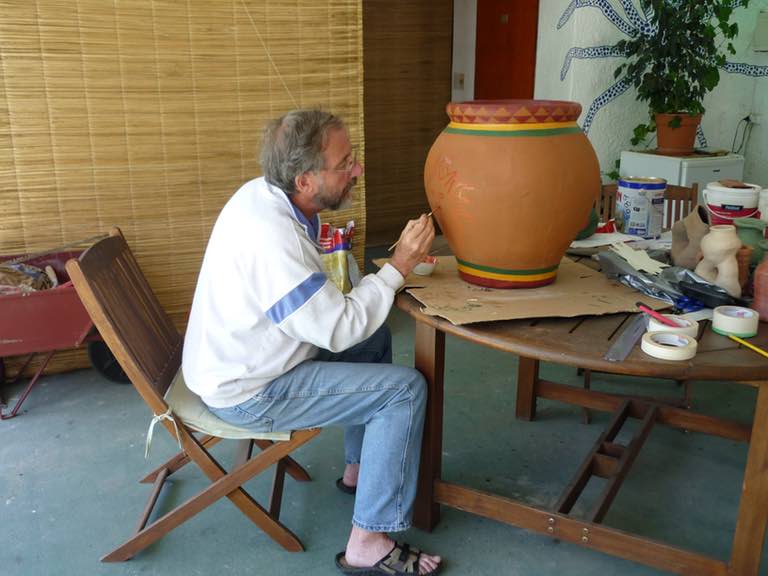

Susan Joyce: Your walking sticks are awesome! What projects are you working on now?
Syd Blackwell: I already have too many Travel Stories and Travel Highlights for entry into Robert Fear´s newest contest, yet I just wrote another one today. Check out Red Shoes by Syd Blackwell.
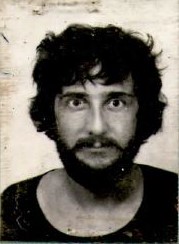
No new mega-projects happening, like last year´s privately circulated Uruguay Days, a book of poems and photos.
Syd’s memoir, Innside Stories: Anecdotes from Wintergreen Inn 1995-2004 is a delightful collection of tales by an innkeeper who loves sharing stories.
Thanks Syd Blackwell! Delighted to get to know you better..
Susan Joyce
I’m delighted with it. Enjoy!
https://www.youtube.com/watch?v=_jgFCZC9PYQ&feature=youtu.be

In early October, I asked for feedback on the book cover design for “Good Morning Diego Garcia.” Comments kept coming in, and all indicated, the designs weren’t quite perfect. We needed something different. So my husband (Doug DuBosque) and I put our heads together and started over. Thanks to your keen observations and super suggestions, Doug created a new, exciting book cover. At the same time, he created a new cover for The Lullaby Illusion.
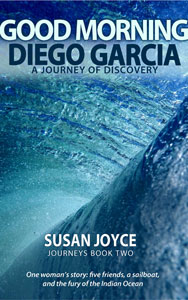
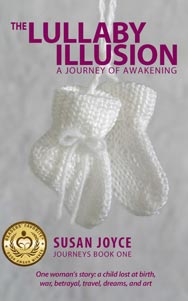
Congratulations to all who commented! You are winners and will receive an e-copy of the book as soon as it’s released. THANK YOU!
Susan Joyce
We asked your opinion of a couple of variations of a cover design we ordered (at the bottom of this page). Although nicely done, it was from a low-cost designer, which means the design process is fairly minimal. For a fixed price, you get a design, period (pretty much). We started looking through hundreds of photos, and found one that better conveyed the sense of turbulence (physical and emotional) that runs throughout the story.
So please have a look and share your thoughts!
What appeals to you, and what doesn’t, and why?
 A) dark w/bubble
A) dark w/bubble
 B) dark w/glow
B) dark w/glow
 C) light
C) light



